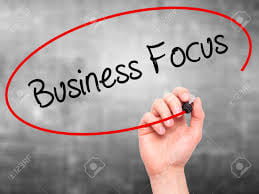8 STRATEGIES TO FOCUS ON OVER THE NEXT 6 MONTHS

Businesses have focused on urgent issues during COVID-19, such as the safety of their employees and customers, and changes in technology for their business to continue to operate productively. The critical next step is to maintain cash flow by managing revenue and expenses.
History teaches us valuable lessons regarding the importance of managing cash during a downturn. Companies that successfully navigated prior crises pursued cash-flow strategies radically generous with customers and partners — and aggressive with revenue and expenses management.
We’ve compiled a list of eight strategies for businesses to focus their efforts over the next few months – including cash-flow reporting, cash reserves, shorten cycle times, eliminate mistakes, review your business model, the 1% margin gain and business positioning. Our recommendations are:
1. Weekly Cash Flow Reporting
As the old adage cites, cash is king, and nothing rings truer in business. The facility to pay creditors and pay staff wages is essential and cash flow management is an ongoing function, assessed regularly.
Cash flow management practices, design plans should be reviewed to improve cash flow; implement and report in a weekly rhythm.
2. Cash Reserves
Position your business not only to survive a downturn, however, to take advantage and thrive when momentum kicks in. Therefore, place a heavy emphasis on your cash reserves to support you through the tough times. A core capital target of six months of operating expenses in cash is recommended.
3. Shorten Cycle Times
Build efficiency to sell faster and paid quicker. Send out invoices within shortened time frames to receive earlier payment.
Be consistent and set clear expectations.
Ensure you have an automated online accounting software solution.
Set up email reminders a few days prior to the invoice is due, which numerous accounting solutions do automatically.
4. Eliminate Mistakes
Customers pay faster when their expectations are met. Are your systems and processes for delivery of services and products efficient and reliable?
5. Change Your Business Model
Conduct an objective business review regarding cash flow. Consider the principle of building stronger relationships with suppliers, customers, and consumers. Can you implement upfront payments, deposits ahead of delivery and conversely consider extending payment terms for more vulnerable customers?
“The more a business owner knows about their cash flow, the more empowered they become.” — Nick Chandi
6. 1% Margin Gain
The Aggregation of Marginal gains is a concept made famous by Dave Brailsford, the British cycling team coach. His team won the London Olympics and furthermore, he coached Chris Froome and Bradley Wiggins to Tour de France victories.
The concept is simple. If a 1% or very marginal gain can be made across all facets of a team or business, then the aggregated improvement becomes significant. Similarly, if marginal declines are tolerated, degradation accelerates. It is simple mathematics however often overlooked.
Adjust these 7 financial levers to impact profitability:
Price
Volume
Cost of Goods Sold (COGS) / Direct Costs
Operating Expenses
Accounts Receivable
Inventory / Work in progress (WIP)
Accounts Payable
7. Position Your Business For the Next Normal
Re-evaluate your business to drive sustainable profitable growth through a range of strategies around product, promotions, supplier management, pricing, innovation, and brand building.
Core aspects
What to do?
What to avoid?
Pricing Consider planned moderate price adjustments. Increase price on essentials.
Promotions Shift spend to categories and activities where there is more demand. Running “business as usual” promotions that are inefficient or where supply constraints limit the ability to support higher demand.
Portfolio/product Reconsider new product launches and either roll out faster or delay. Push a higher-priced product simply to improve profitability.
Trade Ensure customers, clients and members with the strongest inclination to purchase are prioritised. Consider actions that could affect the viability of more vulnerable customers.
8. Address Ongoing COVID-19 Concerns
It is important to keep an eye on your market’s spending habits to understand the ongoing impact on cash-flow. For example, discover if the shift to at home consumption has become a habit or will it drop back to pre-pandemic levels.
We recommend holding more frequent focus groups and surveys to understand the data in detail.



